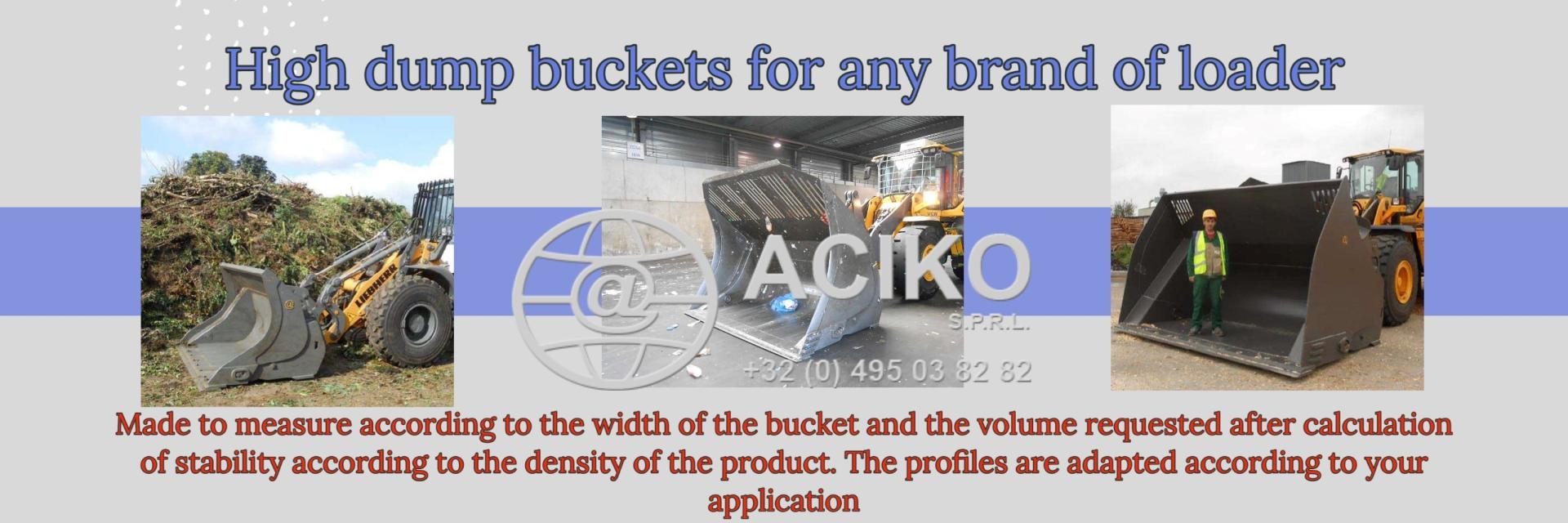R.E.News future Technology-Extracting Gold Sustainably from Ore and E‑Waste
 04/08/25-FR-English-NL-footer
04/08/25-FR-English-NL-footer
Extraire l'or de manière durable à partir de minerais et de déchets électroniques
 Image-R.E.News©
Image-R.E.News©
Le rôle de l'or dans les secteurs de la technologie, de l'aérospatiale et de la finance est indéniable, mais son extraction a un coût environnemental élevé. L'exploitation minière traditionnelle repose en grande partie sur le cyanure et le mercure, des produits chimiques connus pour leur pollution et leurs risques pour la santé.
Une étude révolutionnaire publiée dans Nature Sustainability propose une solution : une nouvelle méthode utilisant l'acide trichloroisocyanurique et un polymère soufré réutilisable pour extraire proprement l'or des minerais et des déchets électroniques.
Au cœur de cette innovation se trouve l'acide trichloroisocyanurique (TCCA), un désinfectant chimique couramment utilisé dans le traitement des eaux. Activé par un catalyseur halogéné – généralement du chlorure ou du bromure de sodium –, il oxyde efficacement l'or, le dissolvant du minerai et des circuits imprimés sans recourir au cyanure ni au mercure.
L'importance de cette approche est majeure. En éliminant les réactifs toxiques utilisés dans plus de 80 % des lixiviations d'or actuelles, cette approche répond aux préoccupations environnementales, réglementaires et sanitaires des secteurs miniers industriels et artisanaux.
Une fois l'or en solution, l'étape suivante consiste à le capturer. L'équipe de recherche de Flinders a développé un sorbant polymère polysulfure qui lie sélectivement les ions or, même dans des mélanges complexes avec d'autres métaux. Ces sorbants sont redox actifs : ils réduisent le sel d'or en métal, l'extrayant de la solution par affinité chimique.
Mieux encore ? Le polymère peut être dépolymérisé ou pyrolysé pour libérer de l'or d'une pureté supérieure à 99 %, puis recyclé pour être réutilisé. Il s'agit d'un système en boucle fermée qui allie récupération et durabilité.
Efficacité démontrée sur plusieurs sources
Les tests ont confirmé l'efficacité de la méthode sur :
Orfèvrerie traditionnelle
Circuits imprimés et déchets électroniques mixtes
Déchets métalliques de laboratoire et industriels
Le rendement d'extraction et la pureté élevés ont été démontrés sur ces trois types de matériaux, ce qui constitue la base d'une mise à l'échelle avec des usines de recyclage et des partenaires miniers.
Selon le professeur Justin Chalker de l'Université Flinders en Australie : « L'objectif est de fournir des méthodes efficaces de récupération de l'or qui soutiennent ses nombreuses utilisations, tout en réduisant son impact sur l'environnement et la santé humaine.»
Pour l'exploitation minière et le recyclage des déchets électroniques, cela élimine l'utilisation de cyanure et de mercure et réduit considérablement la production de déchets toxiques, offrant ainsi une solution rentable et évolutive.
Pour les mineurs artisanaux et à petite échelle, l'amalgamation au mercure reste courante dans l'exploitation minière à petite échelle, responsable de jusqu'à 40 % des émissions mondiales de mercure. Un procédé sans mercure contribue à protéger les communautés et les écosystèmes de l'exposition et de la contamination sans compromettre le rendement.
Pour l'économie circulaire, avec des déchets électroniques mondiaux atteignant 62 millions de tonnes en 2022, et qui devraient dépasser les 80 millions de tonnes d'ici 2030, chaque vieux téléphone ou circuit imprimé représente à la fois un danger et une ressource. Cette méthode transforme une charge environnementale en opportunité génératrice de profits, en parfaite adéquation avec les objectifs de l'exploitation minière urbaine et de l'économie circulaire.
Fonctionnement du procédé
Lixiviation – Appliquer du TCCA dans une solution activée par un sel pour dissoudre l'or par oxydation.
Liaison – Introduire un sorbant polymère polysulfure qui adsorbe sélectivement les ions or et les réduit en métal.
Récupération – Libérer l'or à une pureté supérieure à 99 % par chauffage (pyrolyse) ou dépolymérisation du polymère ; recycler le monomère polymère pour une utilisation répétée.
Contexte général et implications industrielles
Pression réglementaire croissante sur l'utilisation du cyanure et du mercure
Intérêt accru des investisseurs pour des pratiques conformes aux normes ESG
La demande en intrants technologiques durables nécessite l'or, un élément crucial dans la microélectronique, l'aérospatiale, les dispositifs médicaux et les sciences des matériaux.
L'adoption de cette technologie par les gouvernements et les entreprises pourrait établir une nouvelle norme industrielle, réduisant ainsi l'empreinte carbone et les déchets dangereux tout en valorisant les déchets électroniques.
Durabilité à grande échelle
L'équipe de recherche travaille actuellement sur des opérations d'extraction minière et de recyclage des déchets électroniques afin de tester cette technique à l'échelle commerciale. Grâce à la recyclabilité du polymère et au faible coût des réactifs, cette méthode est bien placée pour atteindre une faisabilité industrielle sans investissements importants.
Si elle est déployée efficacement à grande échelle, elle pourrait faire évoluer la chaîne d'approvisionnement en or vers un modèle circulaire et non toxique, préservant ainsi les écosystèmes naturels et les communautés humaines.
Cette nouvelle méthode marque un tournant dans les secteurs de la construction et des ressources durables. Grâce à la récupération d'or de haute pureté provenant de sources primaires et secondaires, sans mercure ni cyanure, cette approche représente une avancée significative.
Elle s'intègre parfaitement aux stratégies ESG des entreprises, soutient les mesures politiques visant à interdire les substances dangereuses et pourrait même attirer des investissements de fonds de technologies vertes et de champions de l'économie circulaire.
Compte tenu de la pression mondiale croissante en faveur de pratiques minières plus propres et de la valorisation des déchets électroniques, cette innovation pourrait devenir la pierre angulaire de la récupération d'or de nouvelle génération.
NJC.© Info study Nature Sustainability Flinders University
------------------------------------------------------------------------------------------------------------
 04/08/25-English
04/08/25-English
Extracting Gold Sustainably from Ore and E‑Waste
 Image-R.E.News©
Image-R.E.News©
Gold’s role in technology, aerospace and finance is indisputable, but extracting it comes at a high environmental price. Traditional mining relies heavily on cyanide and mercury, chemicals infamous for pollution and health risks.
A breakthrough study in Nature Sustainability offers a solution: a novel method that uses trichloroisocyanuric acid and a reusable sulfur polymer to extract gold cleanly from both ore and electronic waste.
At the heart of the innovation lies trichloroisocyanuric acid (TCCA), a disinfectant chemical commonly used in water treatment. Activated with a halide catalyst—typically sodium chloride or bromide—it oxidises gold effectively, dissolving it from ore and circuit boards without resorting to cyanide or mercury.
The significance is major. By eliminating toxic reagents used in over 80% of current gold leaching, this approach addresses environmental, regulatory and health concerns in both industrial and artisanal mining sectors.
Once the gold is in solution, the next trick is capturing it. The Flinders research team developed a polysulfide polymer sorbent that binds gold ions selectively—even in complex mixtures with other metals. These sorbents are redox active: they actually reduce the gold salt to the metal, pulling it out of solution through chemical affinity.
Even better? The polymer can be depolymerised or pyrolyzed to release gold with over 99% purity, and then recycled for reuse. It’s a closed-loop system that combines recovery with sustainability.
Demonstrated Efficacy Across Sources
Tests confirmed the method works on:
Traditional gold ore
Printed circuit boards and mixed e‑waste
Lab and industrial metal‑containing waste
The high extraction yield and purity have been demonstrated across all three, forming the basis for scaling up with recycling plants and mining partners.
In the words of Professor Justin Chalker of Flinders University in Austalia: “The aim is to provide effective gold recovery methods that support the many uses of gold, while lessening the impact on the environment and human health.”
For Mining and E‑Waste Recycling this eliminates cyanide and mercury use, and drastically cuts toxic waste production, offering a cost-effective, scalable solution.
For Artisanal and Small-Scale Miners mercury amalgamation remains prevalent in small-scale mining, responsible for up to 40% of global mercury emissions. A mercury‑free process helps protect communities and ecosystems from exposure and contamination without sacrificing yield.
For the Circular Economy with global electronic waste reaching 62 million tonnes in 2022—and projected to hit over 80 million tonnes by 2030—every old phone or circuit board represents both a hazard and a resource. This method transforms an environmental burden into a profit-generating opportunity, aligning perfectly with urban-mining and circular economy goals.
How the Process Works
Leaching – Apply TCCA in salt-activated solution to oxidatively dissolve gold.
Binding – Introduce polysulfide polymer sorbent that selectively adsorbs gold ions and reduces them to metal.
Recovery – Release gold at >99% purity by heating (pyrolysis) or depolymerising the polymer; recycle the polymer monomer for repeated use.
Broader Context and Industry Implications
Growing regulatory pressure on cyanide and mercury use
Heightened investor interest in ESG-compliant practices
Demand for sustainable technology inputs requires gold, which is crucial in microelectronics, aerospace, medical devices and materials sciences
Governments and corporations adopting this technology could set a new industry standard, reducing carbon footprints and hazardous waste while extracting economic value from e‑waste.
Sustainability at Scale
The research team is now engaged with mining and e‑waste recycling operations to pilot the technique at commercial scale. Thanks to the polymer’s recyclability and low reagent cost, this method is well‑poised to achieve industrial feasibility without hefty capital expenditure.
If scaled effectively, it could shift the gold supply chain to a circular, non‑toxic model, safeguarding both natural ecosystems and human communities.
This new method marks a turning point in sustainable construction and resource industries. With high purity gold recovery from primary and secondary sources, all without mercury or cyanide, the approach reports a significant leap forward.
It fits right into corporate ESG strategies, supports policy moves to ban hazardous substances, and may even attract investment from green-tech funds and circular economy champions.
Given mounting global pressure to clean up mining practices and reclaim value from e‑waste, this innovation could become a cornerstone for next‑generation gold recovery.
NJC.© Info study Nature Sustainability Flinders University
----------------------------------------------------------------------------------------------------------------
 04/08/25-NL
04/08/25-NL
Duurzaam goud winnen uit erts en elektronisch afval
 Image-R.E.News©
Image-R.E.News©
De rol van goud in technologie, lucht- en ruimtevaart en financiën is onbetwistbaar, maar de winning ervan brengt een hoge milieuprijs met zich mee. Traditionele mijnbouw is sterk afhankelijk van cyanide en kwik, chemicaliën die berucht zijn om hun vervuiling en gezondheidsrisico's.
Een baanbrekende studie in Nature Sustainability biedt een oplossing: een nieuwe methode die trichloorisocyanuurzuur en een herbruikbaar zwavelpolymeer gebruikt om goud schoon te winnen uit zowel erts als elektronisch afval.
De kern van de innovatie wordt gevormd door trichloorisocyanuurzuur (TCCA), een desinfecterende chemische stof die veel wordt gebruikt in waterzuivering. Geactiveerd met een halidekatalysator – meestal natriumchloride of bromide – oxideert het goud effectief en lost het op uit erts en printplaten zonder gebruik te maken van cyanide of kwik.
Het belang is groot. Door de giftige reagentia te elimineren die bij meer dan 80% van de huidige gouduitloging worden gebruikt, pakt deze aanpak milieu-, regelgevings- en gezondheidskwesties aan in zowel de industriële als de ambachtelijke mijnbouwsector.
Zodra het goud in oplossing is, is de volgende truc het vangen ervan. Het Flinders-onderzoeksteam ontwikkelde een polysulfidepolymeersorbent dat goudionen selectief bindt – zelfs in complexe mengsels met andere metalen. Deze sorbentia zijn redoxactief: ze reduceren het goudzout daadwerkelijk tot het metaal en halen het door chemische affiniteit uit de oplossing.
Nog beter? Het polymeer kan worden gedepolymeriseerd of gepyrolyseerd om goud met een zuiverheid van meer dan 99% vrij te maken, en vervolgens worden gerecycled voor hergebruik. Het is een gesloten kringloopsysteem dat terugwinning combineert met duurzaamheid.
Aangetoonde werkzaamheid in alle bronnen
Tests bevestigden dat de methode werkt op:
Traditioneel gouderts
Printplaten en gemengd e-afval
Metaalhoudend afval uit laboratoria en de industrie
De hoge extractieopbrengst en zuiverheid zijn in alle drie de gevallen aangetoond, wat de basis vormt voor opschaling met recyclingfabrieken en mijnbouwpartners.
In de woorden van professor Justin Chalker van Flinders University in Australië: "Het doel is om effectieve methoden voor goudwinning te bieden die de vele toepassingen van goud ondersteunen en tegelijkertijd de impact op het milieu en de menselijke gezondheid verminderen."
Voor mijnbouw en recycling van elektronisch afval elimineert dit het gebruik van cyanide en kwik en vermindert het de productie van giftig afval drastisch, wat een kosteneffectieve, schaalbare oplossing biedt.
Voor ambachtelijke en kleinschalige mijnbouwbedrijven blijft kwikmenging gangbaar in kleinschalige mijnbouw, verantwoordelijk voor tot wel 40% van de wereldwijde kwikemissies. Een kwikvrij proces helpt gemeenschappen en ecosystemen te beschermen tegen blootstelling en besmetting zonder dat dit ten koste gaat van de opbrengst.
Voor de circulaire economie, met een wereldwijd elektronisch afval van 62 miljoen ton in 2022 – en naar verwachting meer dan 80 miljoen ton in 2030 – vormt elke oude telefoon of printplaat zowel een gevaar als een hulpbron. Deze methode transformeert een milieubelasting in een winstgevende kans, die perfect aansluit bij de doelstellingen van stedelijke mijnbouw en de circulaire economie.
Hoe het proces werkt
Uitloging – Breng TCCA aan in een zoutgeactiveerde oplossing om goud oxidatief op te lossen.
Binding – Voeg een polysulfidepolymeersorbens toe dat selectief goudionen adsorbeert en reduceert tot metaal.
Terugwinning – Haal goud met een zuiverheid van >99% vrij door verhitting (pirolyse) of depolymerisatie van het polymeer; recycle het polymeermonomeer voor herhaald gebruik.
Bredere context en implicaties voor de industrie
Toenemende regelgevende druk op het gebruik van cyanide en kwik
Toenemende interesse van investeerders in ESG-conforme praktijken
De vraag naar duurzame technologische input vereist goud, dat cruciaal is in de micro-elektronica, de lucht- en ruimtevaart, medische apparatuur en materiaalkunde
Overheden en bedrijven die deze technologie omarmen, zouden een nieuwe industriestandaard kunnen zetten door de CO2-voetafdruk en het gevaarlijk afval te verkleinen en tegelijkertijd economische waarde te halen uit e-waste. Duurzaamheid op schaal
Het onderzoeksteam is nu bezig met mijnbouw en recycling van e-afval om de techniek op commerciële schaal te testen. Dankzij de recyclebaarheid van het polymeer en de lage reagenskosten is deze methode goed gepositioneerd om industriële haalbaarheid te bereiken zonder forse kapitaalinvesteringen.
Als het effectief wordt opgeschaald, zou het de goudvoorzieningsketen kunnen verschuiven naar een circulair, niet-toxisch model, waarmee zowel natuurlijke ecosystemen als menselijke gemeenschappen worden beschermd.
Deze nieuwe methode markeert een keerpunt in de duurzame bouw- en grondstoffenindustrie. Met de winning van zeer zuiver goud uit primaire en secundaire bronnen, allemaal zonder kwik of cyanide, boekt de aanpak een aanzienlijke sprong voorwaarts.
Het past perfect in de ESG-strategieën van bedrijven, ondersteunt beleidsmatige stappen om gevaarlijke stoffen te verbieden en kan zelfs investeringen aantrekken van groene technologiefondsen en voorvechters van de circulaire economie.
Gezien de toenemende wereldwijde druk om mijnbouwpraktijken op te schonen en waarde terug te winnen uit e-afval, zou deze innovatie een hoeksteen kunnen worden voor de volgende generatie goudwinning.
NJC.© Info study Nature Sustainability Flinders University
----------------------------------------------------------------------------------------------------------------
Date de dernière mise à jour : 01/08/2025
















